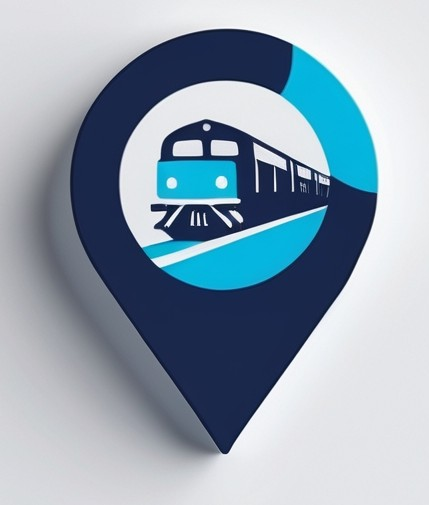
The Mont-Saint-Hilaire (CN Bridge) train observation spot is a popular location for train enthusiasts and photographers. Situated near the Canadian National Railway bridge, it offers a scenic view of trains crossing the Richelieu River, set against the backdrop of Mont-Saint-Hilaire's natural beauty.
Photos
Sign in to upload photos
No Photos Yet
Be the first to share photos of this location!
Mont-Saint-Hilaire (CN Bridge) – Mont-Saint-Hilaire, Quebec, Canada | Train Spotting Location
Trainspotting Experience
From the public riverside path and adjacent green space, railfans stand roughly 60 m from the right-of-way, close enough to feel the ground rumble yet far enough for safe viewing. Trains announce themselves with horn blasts echoing across the water as they approach the bridge curves at around 60–70 km/h. Acceleration resumes once the lead units clear the far abutment, so visitors hear a distinct crescendo of diesel power and flange squeal. Mixed manifests routinely exceed 7 000 ft, producing a drawn-out parade that can last three to four minutes. VIA Rail corridor trains and Exo commuter sets, by contrast, sprint through in under 40 seconds, offering sharp, fast-moving photo opportunities. Nighttime spotting is feasible thanks to nearby streetlighting that silhouettes locomotives against the river, while the absence of fencing at the viewing point keeps the sightlines uncluttered.
Landscape, Setting & Local Atmosphere
The bridge spans a calm, 250 m-wide section of the Richelieu with Mont Saint-Hilaire’s forested slopes forming a dramatic eastern horizon. Shoreline willow and silver maple frame the rails, turning vivid gold in October, while summer brings a lush green tunnel effect. Elevation at the viewing area is only a few metres above water level, lending photographers a low, reflective angle; morning mist often drifts above the river, adding a moody veil to the steel latticework. Winters are cold but visually rewarding—fresh snow on the girder chords and audible wheel chatter on frozen rail create a cinematic ambience. Despite being minutes from suburban streets, the spot remains quiet save for waterfowl and the hum of locomotives.
Type & Frequency of Train Activity
The bridge carries Canadian National’s Saint-Hyacinthe Subdivision, a key artery between Montréal Taschereau Yard and points east. On an average weekday railfans can expect:
• 18–25 CN freight movements, including intermodal double-stacks, mixed merchandise, grain, crude oil blocks, and occasional dimensional loads.
• 8 weekday Exo Line 4 commuter round trips (F59PH locomotives pushing/pulling bi-level cars).
• 12–14 VIA Rail corridor trains linking Montréal with Québec City and the Maritimes, typically powered by Siemens Charger or GE P42 units.
Traffic tapers after 23:00 but at least four overnight freights still cross, pleasing long-exposure photographers. All trains run under CTC control, so meets on the bridge itself are rare, but staggered scheduling means idle time between movements seldom exceeds 40 minutes in daylight hours.
Best Angles for Photos & What Railfans Enjoy Most
• West Bank Foreshore: The primary pull-off offers a broadside view with the mountain in the distance—ideal from dawn until early afternoon when sunlight falls on locomotive noses.
• Riverside Rocks: A short walk south leads to lower rocks that create mirror-like water reflections, especially at sunrise. Bring a 24–70 mm lens for full-train compositions.
• Northern Embankment Knoll: A modest grassy rise gives a three-quarter angle of trains curving onto the span; late-day golden light backlights exhaust plumes.
Tripods are optional; the steady footing on packed gravel makes handheld panning easy. Spotters appreciate the audible advance warning provided by steel wheels clattering onto the bridge joints—ample time to set focus or switch to video.
Historical or Cultural Relevance
This crossing is the modern successor to the “Beloeil Bridge,” site of Canada’s worst rail disaster on 29 June 1864 when a Grand Trunk passenger train plunged into the canal after failing to heed an open swing-bridge signal, killing 99. Memorial plaques in nearby Saint-Hilaire recall the tragedy, underscoring the importance of today’s signaling protocols. The current steel truss, erected in 1913 and strengthened for heavier freight in the 1990s, showcases early 20th-century riveted construction. Its survival through two World Wars and the steam-to-diesel transition makes the span a living artifact of Canadian rail engineering.
What Makes This Spot Different
Unlike many Montréal-area vantage points hemmed in by fencing or industrial clutter, Mont-Saint-Hilaire offers a clear, riverside perch where natural scenery and heavy rail coexist. The ability to capture long intermodal stacks and modern passenger consists on the same bridge within minutes sets it apart from single-use commuter corridors. Add the added layer of historical significance and the mountain backdrop, and the location becomes a one-stop portfolio builder for both historians and action photographers.
Seasonal Information
For Mont-Saint-Hilaire (CN Bridge), spring and fall offer mild weather and vibrant scenery, ideal for train watching. Summer provides long daylight hours, while winter offers picturesque snowy views. Check for special train events and plan for potential tourist crowds in peak seasons.
Other Interesting Locations
Looking for more spots? Browse the complete list of train spotting locations.
Quick Information
Country
Canada
Region / State / Province
Quebec
City
Mont-Saint-Hilaire
Spot Type
Bridge
Best Times
Best hours: Weekdays during morning (7-9 AM) and evening (5-7 PM) peak times for frequent train activity.
